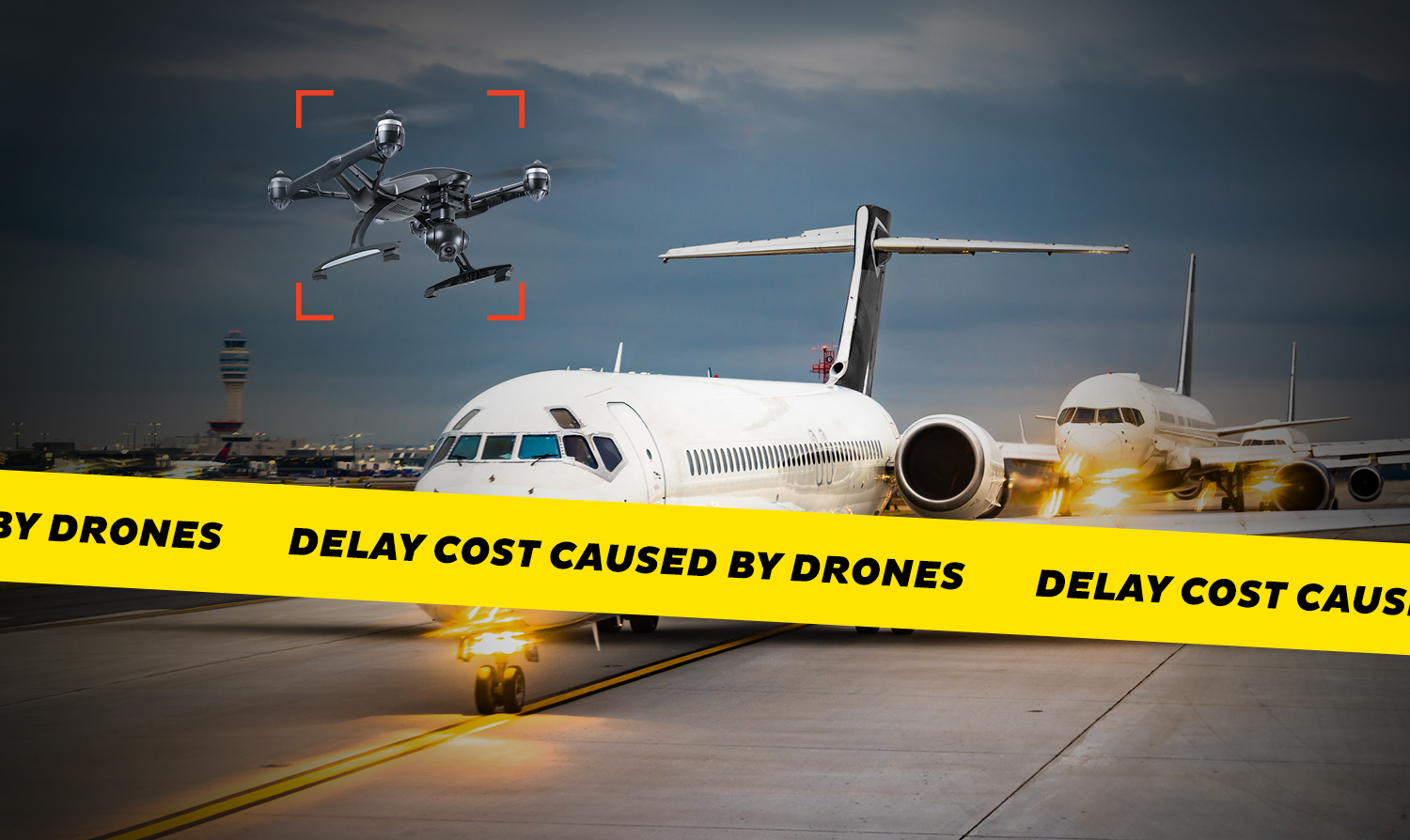Thank you! Your submission has been received!
dedrone blog


There’s no getting around it: summer travel this year might be even worse than you think. But experts predicting travel will be “chaos,” and “a mess again” are not deterring Americans, with six in 10 expected to travel this summer.
All these issues plaguing summer travel, including high crowds, shortage of pilots and other personnel, high cost of fuel and more, have yet to take into account the highly disruptive impact of the illegal drone activity at airports.
We all understand intuitively that unmanned aircraft in these heavily restricted spaces represent a huge security risk and lead to grounded flights, delays, suspensions, and taxiing back and forth in the hopes of taking off. What has been less clear until now is how much these drone incursions really cost, to airports, airlines and consumers alike.
Using a mix of data from public sources like the FAA, as well as our own proprietary data, we put together some concrete numbers.
First, the cost to passengers: by our calculations, passengers lose $42 for every hour of delay caused by illegal drone activity. When an average domestic round trip ticket costs $330 according to Hopper, an hour’s delay is almost 13% of the ticket price, to say nothing of the frustrations caused by flight delays like missed connections or missing baggage.
The costs to airlines add up even more quickly, and taken together with soaring fuel costs and fewer flights being available due to staffing shortages, it’s a perfect storm for even higher plane ticket prices.
Here’s a sample looking at some of the biggest and busiest American airports, including gate delays, taxiing but otherwise grounded, and in - air delays caused by diversions:
When airlines like Delta were posting net incomes close to $5 billion pre-pandemic, this might seem like a drop in the bucket. However, the FAA is also cataloging a general increase in drone sightings. For the most recent data available, Q4 2020 to Q4 2021, there was a 31.9% increase in UAS sightings at airports.
Dedrone’s own data suggests that the true increase of incursions could be much higher. Comparing our data from January to April 2021 and the same period in 2022, we saw a 205.2% increase in the number of drone alerts on a per site basis. We’re used by over 20 of the world’s airports, so it’s clear this isn’t just an American issue.
What, then, is the solution? Right now, the obvious answer is that more airports need to take drone incursions seriously. The 2018 Gatwick incident, which saw over 140,000 passengers affected and more than 1000 flights canceled or otherwise affected, was just the beginning – and came with an estimated price tag of $64.5 million. Registered commercial drones in the US alone are nearing 400,000, and the vast majority go unregistered, meaning the true number is likely much, much higher.
Now, I could simply direct you to my colleague Jackson’s excellent blog on airport airspace security, but to save you a few clicks, here’s how we can help mitigate these losses from becoming massive instead of merely large.
First, airports need to actually understand the risks they’re facing. That means observing and gathering data points on current drone activity, noticing if any patterns emerge. With that information in hand, you can begin to build a security plan that’s both tailored to your needs and flexible enough to accommodate new ones.
Second, airports need to invest in continuous improvements in airspace safety. Jackson’s work goes into far deeper detail, but a security plan improves with data. That means collecting data, analyzing responses and updating SOPs.
Finally, airports must prepare for future threats. Staying abreast of developments in the drone industry means that airports will be better equipped to handle issues before they arise, rather than being caught flat-footed and leading to massive delays.
That’s why Dedrone offers a fully integrated counter-drone solution for airports, from assessment to implementation and continuous improvement. That includes DedroneTracker, our web-based solution for drone detection, identification, tracking, and analysis all on one platform for mitigation strategies.
But don’t just trust my word on it. Trust the word of the airports that have already implemented Dedrone and are seeing real results, like Newcastle International Airport in the UK. You can also listen to Chicago’s Airport Safety Professional, Ray Ranne talk about how O’Hare thinks about protecting itself from the threat of drones.
And the next time you see higher ticket prices for that flight you’ve been planning for months, if not years, remember that not every increase can be blamed on higher fuel prices.
Published
June 6, 2022
| Updated
April 25, 2023

About the author
Mary-Lou Smulders is the Chief Marketing Officer at Dedrone, where she leads Dedrone's global marketing and communications team.